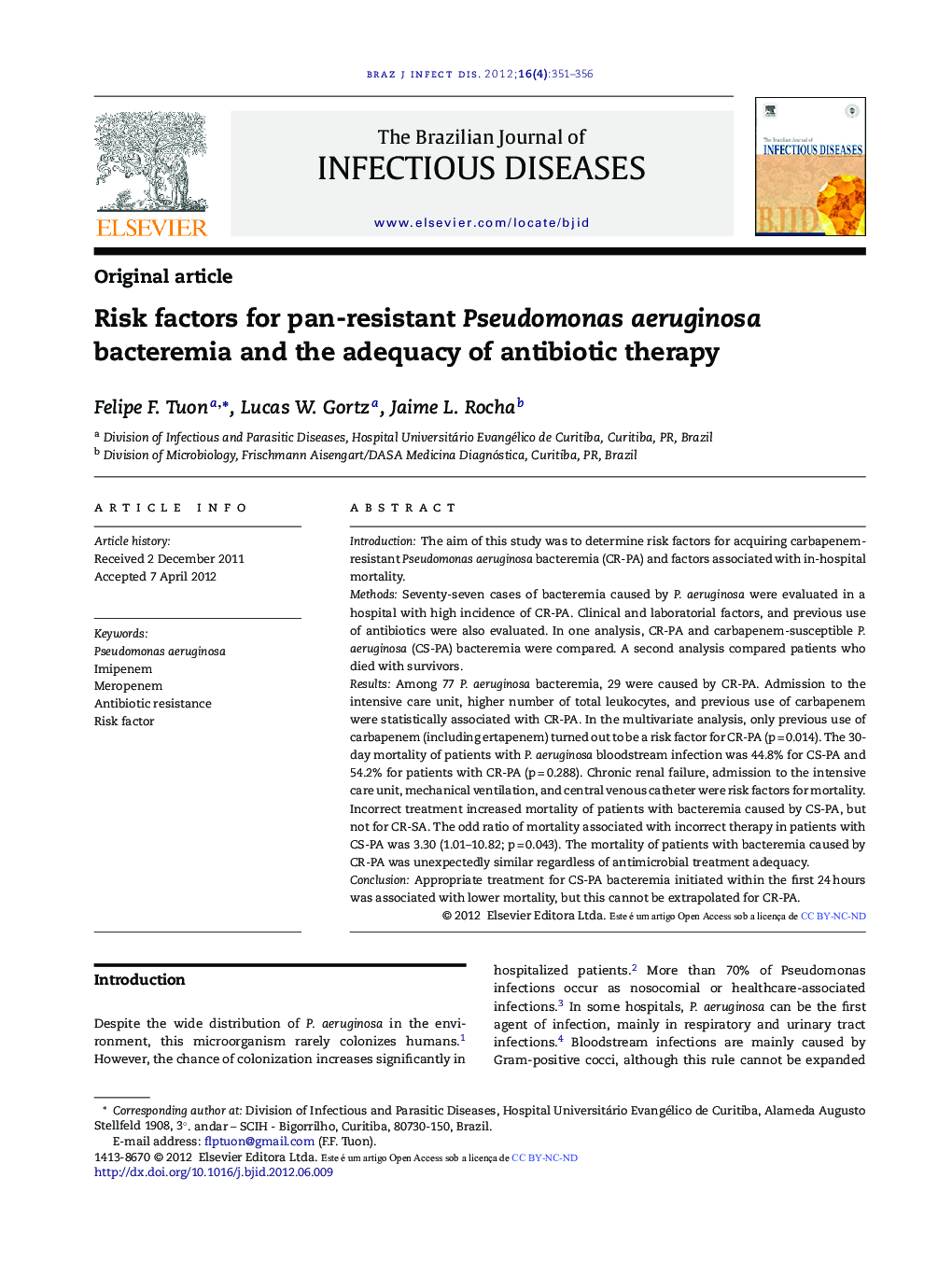| Article ID | Journal | Published Year | Pages | File Type |
|---|---|---|---|---|
| 3344281 | The Brazilian Journal of Infectious Diseases | 2012 | 6 Pages |
IntroductionThe aim of this study was to determine risk factors for acquiring carbapenem-resistant Pseudomonas aeruginosa bacteremia (CR-PA) and factors associated with in-hospital mortality.MethodsSeventy-seven cases of bacteremia caused by P. aeruginosa were evaluated in a hospital with high incidence of CR-PA. Clinical and laboratorial factors, and previous use of antibiotics were also evaluated. In one analysis, CR-PA and carbapenem-susceptible P. aeruginosa (CS-PA) bacteremia were compared. A second analysis compared patients who died with survivors.ResultsAmong 77 P. aeruginosa bacteremia, 29 were caused by CR-PA. Admission to the intensive care unit, higher number of total leukocytes, and previous use of carbapenem were statistically associated with CR-PA. In the multivariate analysis, only previous use of carbapenem (including ertapenem) turned out to be a risk factor for CR-PA (p = 0.014). The 30-day mortality of patients with P. aeruginosa bloodstream infection was 44.8% for CS-PA and 54.2% for patients with CR-PA (p = 0.288). Chronic renal failure, admission to the intensive care unit, mechanical ventilation, and central venous catheter were risk factors for mortality. Incorrect treatment increased mortality of patients with bacteremia caused by CS-PA, but not for CR-SA. The odd ratio of mortality associated with incorrect therapy in patients with CS-PA was 3.30 (1.01–10.82; p = 0.043). The mortality of patients with bacteremia caused by CR-PA was unexpectedly similar regardless of antimicrobial treatment adequacy.ConclusionAppropriate treatment for CS-PA bacteremia initiated within the first 24 hours was associated with lower mortality, but this cannot be extrapolated for CR-PA.
